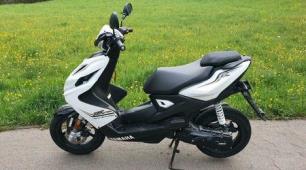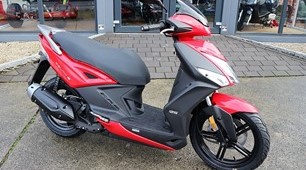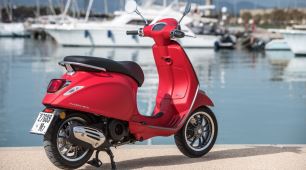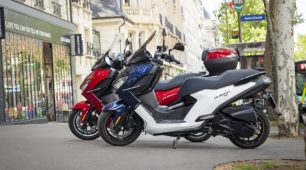 BMW R 1250 RT - Owner's Manual > Traction control (ASC/DTC)
BMW R 1250 RT - Owner's Manual > Traction control (ASC/DTC)
How does ASC/DTC work?
BMW Motorrad ASC/DTC compares the wheel speeds at the front and rear wheel. The differential is used to compute slip as a measure of the reserves of stability available at the rear wheel.
If slip exceeds a certain limit, the engine control intervenes and adapts the engine torque accordingly.
What is the design baseline for ASC/DTC?
BMW Motorrad ASC/DTC is designed as an assistant system for the rider and for use on public roads. The extent to which the rider affects ASC/DTC control can be considerable (weight shifts when cornering, items of luggage loose on the motorcycle), especially when the style of riding takes rider and machine close to the limits imposed by physics.
The system is not optimised for special requirements that apply under extreme competitive situations off-road or on the track. The BMW Motorrad ASC/ DTC can be deactivated in these cases.
WARNING Risky riding
Risk of accident despite ASC/ DTC
- Invariably, it remains the rider's responsibility to adapt riding style to riding conditions.
- Do not take risks that would negate the additional safety offered by this system.
Special situations
In accordance with the laws of physics, the ability to accelerate is restricted more and more as the angle of heel increases. Consequently, there can be a perceptible lag in acceleration out of very tight bends The speeds of the front and rear wheels are compared as one means of detecting the rear wheel's incipient tendency to spin or slip sideways. If the system registers implausible values for a lengthy period the ASC/ DTC function is deactivated for safety reasons and an ASC/DTC fault message is issued. Self-diagnosis has to complete before fault messages can be issued.
The BMW Motorrad ASC/DTC can issue a fault message under the exceptional riding conditions outlined below:
Exceptional riding conditions:
- Riding for a lengthy period with the front wheel lifted off the ground (Wheelie) with ASC/ DTC deactivated.
- Rear wheel rotating with the vehicle held stationary by applying the front brake (Burn Out).
- Heating up with the motorcycle on the centre stand or an auxiliary stand, engine idling or with a gear engaged.
The ASC/DTC is reactivated by switching the ignition off and on again and then riding at a minimum speed.

If the front wheel is lifted in the RAIN and ROAD riding modes, the DTC reduces the engine torque and quickly places the front wheel on the ground again.
However, slight wheelies which are supported by the DTC are permitted in DYNAMIC mode.
Under these circumstances, BMW Motorrad recommends rolling the throttle slightly closed so as to restore stability with the least possible delay.
When riding on a slippery surface, never snap the throttle grip fully closed without pulling the clutch at the same time. Engine braking torque can cause the rear wheel to lock, with a corresponding loss of stability. The BMW Motorrad ASC/DTC is unable to control a situation of this nature.
Electronic Suspension Adjustment (D-ESA)
- with Dynamic ESA OE
Riding position equaliser
The electronic chassis and suspension setting Dynamic ESA is able to adjust your motorcycle automatically to the load. If the spring setting is set to AUTO, the rider does not have to change the load setting.
When driving off and when riding, the system monitors the suspension at the rear wheel and corrects the spring setting in order to set the correct riding position. The damping is also adjusted automatically to the load.
Via ride height sensors, Dynamic ESA detects the movements in the chassis and suspension and responds by adjusting the EDC valves. The chassis and suspension will thus be adapted to the characteristics of the terrain.
Dynamic ESA calibrates itself at regular intervals to ensure the system functions correctly.
Possible settings
Damping modes
- ROAD: Damping for comfortable on-road mode
- DYNA: Damping for dynamic on-road mode
Load settings
- AUTO: Active riding position equaliser with automatic adjustment of the spring setting and damping
- MIN: Minimum spring setting
- MAX: Maximum spring setting
- The rider can select the MIN and MAX spring settings, but cannot change them. The riding position equaliser is inactive when set to MIN and MAX.
See also:
 BMW R 1250 RT - Owner's Manual > Antilock Brake System (ABS)
BMW R 1250 RT - Owner's Manual > Antilock Brake System (ABS)
General instructions To find out more about engineering go to: bmw-motorrad.com/technology Antilock Brake System (ABS) Partially integral brakes
 BMW R 1250 RT - Owner's Manual > Riding mode
BMW R 1250 RT - Owner's Manual > Riding mode
Riding mode selection In order to adapt the motorcycle to weather conditions, road conditions and the rider's riding style, there is a choice of three riding modes: RAIN ROAD with riding modes Pro OE DYNAMIC
 BMW R 1250 RT
BMW R 1250 RT Kymco Agility 50
Kymco Agility 50 Piaggio Liberty 50
Piaggio Liberty 50 Yamaha aerox NS50
Yamaha aerox NS50 Aprilia SR50R
Aprilia SR50R Kymco Agility 50
Kymco Agility 50 Vespa Primavera 50
Vespa Primavera 50 Peugeot Speedfight
Peugeot Speedfight